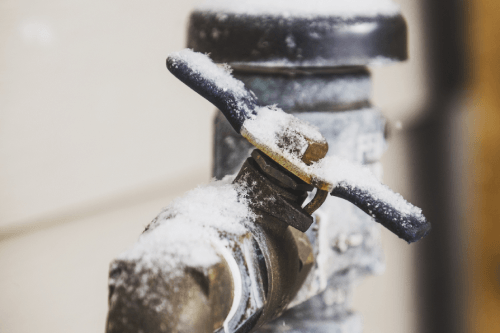Protect Against Frozen Pipes in Winter: Expert Advice
Protect Against Frozen Pipes in Winter: Expert Advice
Blog Article
Were you searching for related information on Helpful Tips to Prevent Frozen Pipes this Winter?

Cold weather can ruin your pipes, particularly by freezing pipes. Right here's exactly how to stop it from taking place and what to do if it does.
Intro
As temperature levels drop, the risk of frozen pipes increases, potentially leading to costly repairs and water damage. Understanding how to stop icy pipelines is vital for house owners in chilly climates.
Avoidance Tips
Shielding at risk pipes
Wrap pipelines in insulation sleeves or utilize heat tape to shield them from freezing temperatures. Focus on pipes in unheated or outside areas of the home.
Heating methods
Keep interior spaces properly heated, specifically locations with pipes. Open cupboard doors to permit cozy air to distribute around pipes under sinks.
Exactly how to determine icy pipes
Try to find lowered water circulation from faucets, unusual smells or sounds from pipelines, and noticeable frost on subjected pipes.
Long-Term Solutions
Architectural adjustments
Consider rerouting pipelines far from exterior walls or unheated areas. Add extra insulation to attics, basements, and crawl spaces.
Upgrading insulation
Purchase top notch insulation for pipelines, attic rooms, and wall surfaces. Appropriate insulation assists preserve consistent temperatures and reduces the risk of icy pipelines.
Securing Outside Plumbing
Yard pipes and outside faucets
Separate and drain garden tubes before winter season. Mount frost-proof faucets or cover outdoor taps with insulated caps.
Recognizing Frozen Pipes
What triggers pipelines to freeze?
Pipelines ice up when exposed to temperature levels below 32 ° F (0 ° C) for extended durations. As water inside the pipelines ices up, it increases, taxing the pipeline wall surfaces and potentially triggering them to burst.
Risks and damages
Icy pipelines can cause water disturbances, property damage, and costly repair services. Burst pipelines can flood homes and create substantial structural damage.
Indications of Frozen Piping
Identifying icy pipes early can avoid them from bursting.
What to Do If Your Pipes Freeze
Immediate actions to take
If you presume icy pipes, keep faucets available to relieve pressure as the ice melts. Make use of a hairdryer or towels taken in warm water to thaw pipes slowly.
Verdict
Preventing icy pipes calls for aggressive steps and fast actions. By comprehending the reasons, indications, and safety nets, house owners can protect their pipes during cold weather.
6 Proven Ways to Prevent Frozen Pipes and Protect Your Home
Disconnect and Drain Garden Hoses
Before winter arrives, start by disconnecting your garden hoses and draining any remaining water. Close the shut-off valves that supply outdoor hose bibs and leave the outdoor faucet open to allow any residual water to drain. For extra protection, consider using faucet covers throughout the colder months. It’s also important to drain water from any sprinkler supply lines following the manufacturer’s directions.
Insulate Exposed Pipes
Insulating your pipes is an effective way to prevent freezing. Pipe insulation is readily available at home improvement stores and is relatively inexpensive. Pay close attention to pipes in unheated areas such as the attic, basement, crawl spaces, or garage. Apply foam insulation generously to create a buffer against the cold. You can also wrap your pipes in heat tape or thermostat-controlled heat cables for added warmth.
Seal Air Leaks
Inspect your home for any cracks or openings that could let in cold air. Seal any holes around the piping in interior or exterior walls, as well as the sill plates where your home rests on its foundation. Additionally, make sure to keep your garage door closed unless you’re entering or exiting. Leaving it open creates a significant air leak that can lead to frozen pipes.
Allow Warm Air Circulation
During cold snaps, it’s essential to allow warm air to circulate evenly throughout your home. Leave interior doors ajar to promote better airflow. Open kitchen and bathroom cabinets to help distribute heat consistently around the rooms. If you have small children or pets, be sure to remove any household chemicals or potentially harmful cleaners from open cabinets for safety.
Let Faucets Drip
A small trickle of water can make a big difference in preventing ice formation inside your pipes. When temperatures drop significantly, start a drip of water from all faucets served by exposed pipes. This continuous flow helps prevent the water from freezing. Additionally, running a few faucets slightly can relieve pressure inside the pipes, reducing the chances of a rupture if the water inside does freeze.
https://choateshvac.com/6-proven-ways-to-prevent-frozen-pipes-and-protect-your-home/

I stumbled upon that article on How To Avoid Freezing Pipes while exploring the search engines. Sharing is caring. Helping people is fun. Many thanks for your time invested reading it.
Instant Quote Report this page